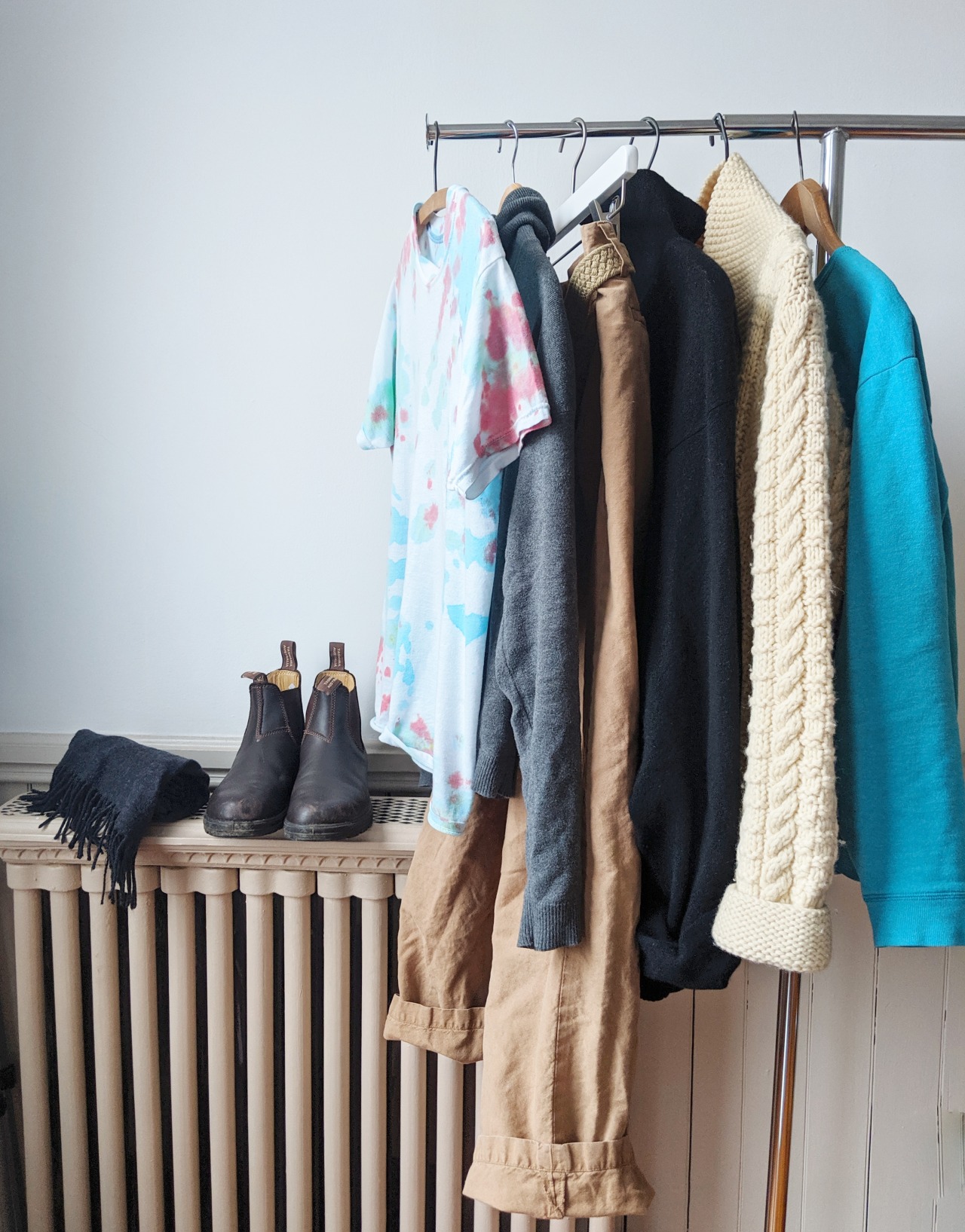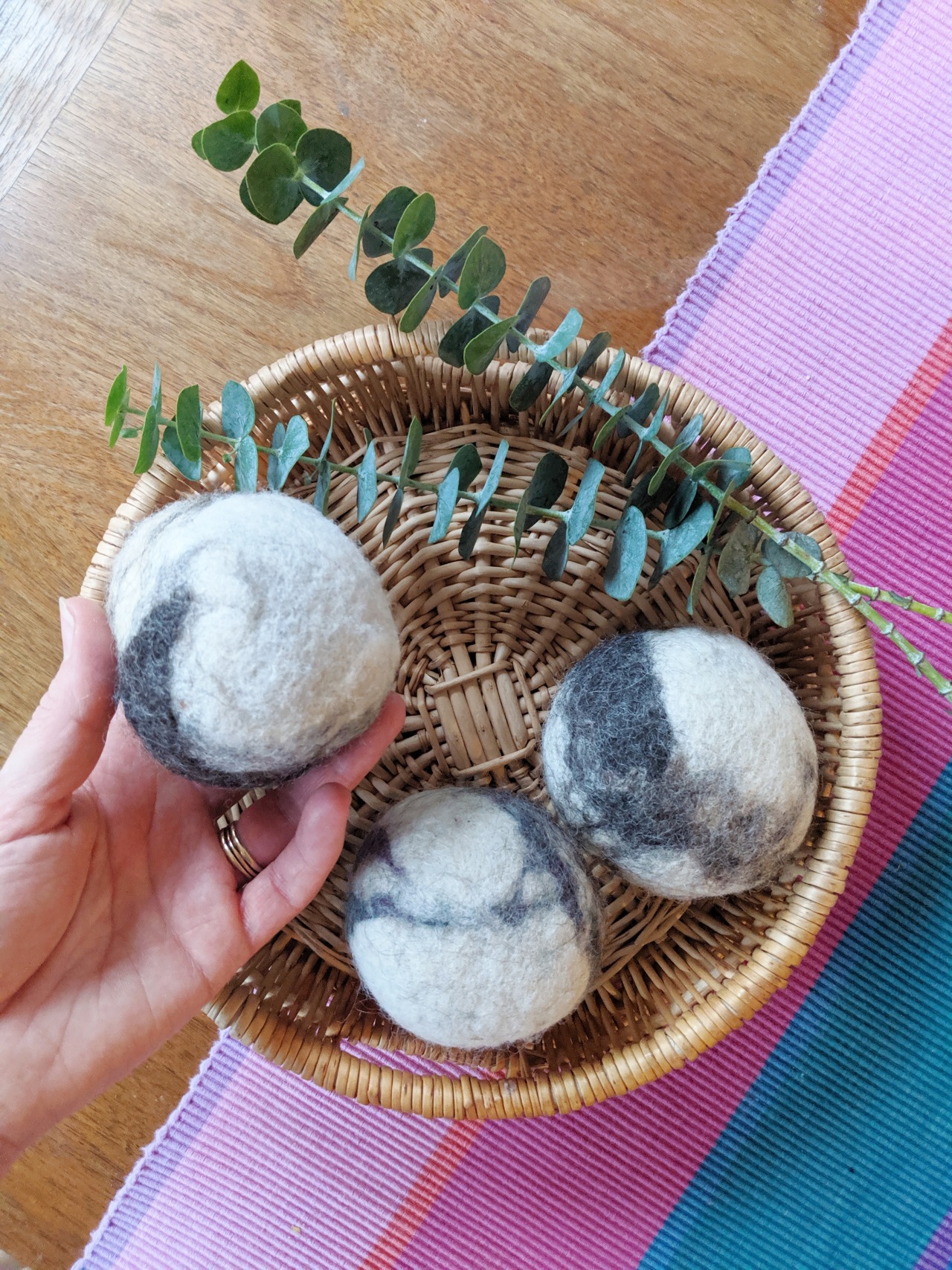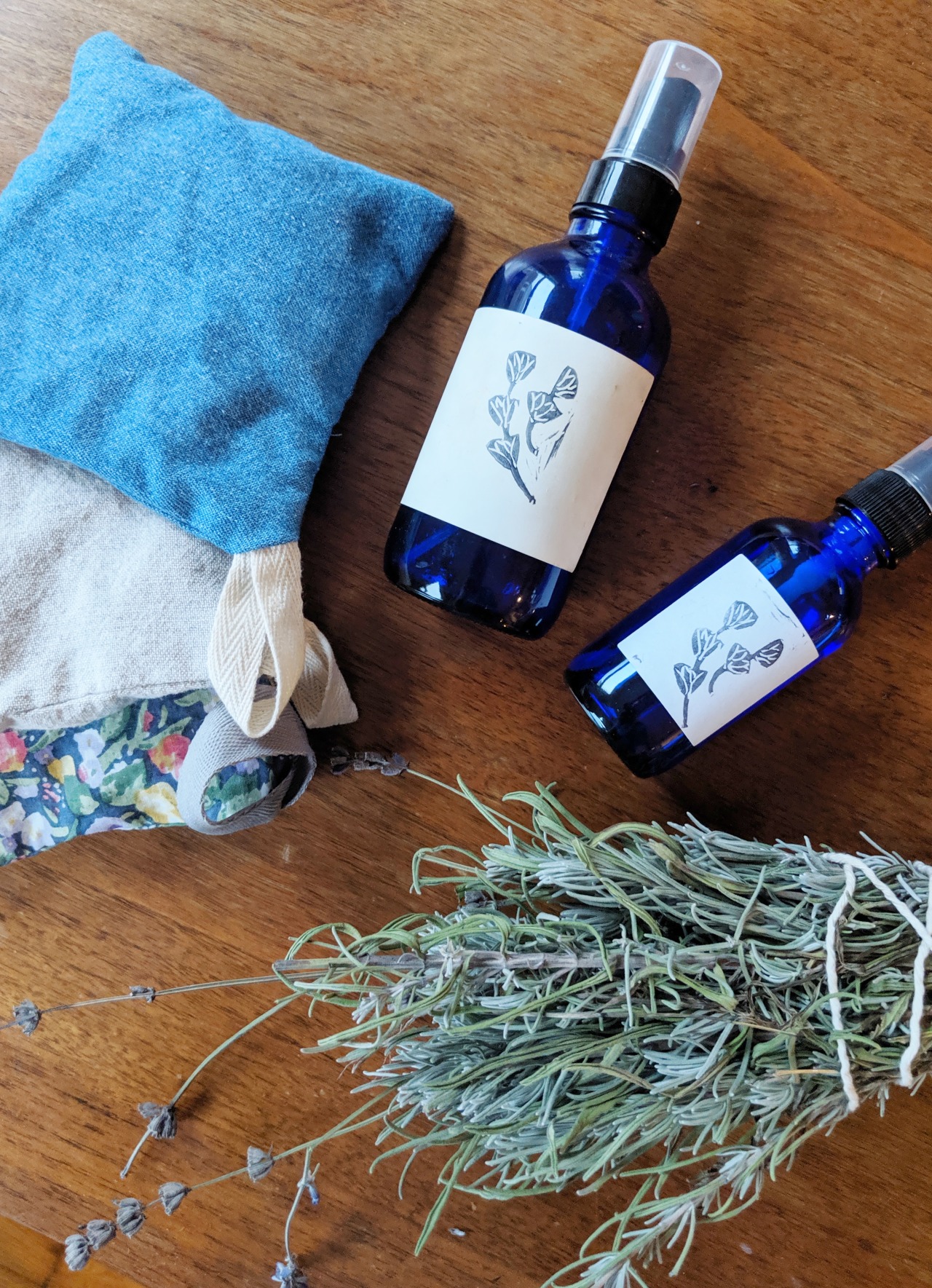
-as you build and refresh your sustainably sourced wardrobe focus on natural fibers-
Every time we wash and dry our clothes millions of micro fibers are shed and released into either the water or the air. Best for those fibers to be naturally derived: cotton, linen, wool, silk, hemp, etc. rather than plastic (synthetics like polyester, nylon, anything with stretch) which doesn’t biodegrade and will eventually make its way into our food or water supply chain.
-wash less often-
kind of obvious, but always good to remember that washing garments less saves water, electricity, and prolongs the life of the garment itself. In our home only athletic gear, undergarments and babywear get washed after one use. Jeans, blouses, sweaters, office wear, everything else can usually be re-worn at least a few times.
hot tip: when it comes to extending your tops and dresses for 2-3 wears before washing, finding a natural deodorant that works for you (I love the Weleda spray) and wearing natural fibers will help reduce stinky sweat production and prevent creepy antiperspirant related staining. I’m also a big proponent of sourcing everyday pieces that have a loose fit through the shoulder + underarms for ease of movement but also breathability.
a little guide to healthiest deodorant products via EWG
hotter tip: if you frequently like to wear fitted retro styles, I know a lot of women like underarm protectors, which can be pinned or tacked in and can help avoid anxiety-inducing wet washing of vintage fabrics or extra trips to the dry cleaner.
-dry less often-
when you do a load of wash, consider what items can be hung to dry. I use a folding rack and for garments that aren’t heavy/don’t stretch, hangers on the shower curtain rod. Some items *do* benefit from a little fluff in the dryer to soften and de-wrinkle them a bit. I suggest letting them mostly air dry then popping them in the dryer for a quick 15 minute finish. Once again, saves electricity, reduces fiber shedding and prolongs the life of garments. Outdoor lines are awesome too, especially on breezy sunny days. if you have the outdoor space to set one up you should def go for it. Ours is retractable so it doesn’t get in the way of other yard activities when not in use.
-wash with cold water-
Most of our clothes do not need hot water to clean them. Use a cold cycle to save hot water and prolong clothing life. Generally in garment care, exposure to high direct heat should be avoided where possible. less heat = longer life. We generally use warm/hot water only for kitchen/bath linens, gym wear, and soiled baby clothes.
-use an EWG highly rated laundry detergent-
probably the easiest step we can take towards a more sustainable laundry practice is finding a healthier detergent. There are so many eco-friendly, “natural” detergent options out there. I love the Environmental Working Group’s list of rated products. It will help you find one that works for you and that you can easily pick up at one of your local retailers. Generally avoid fragrance (fragrance = chemicals) or any kind of deodorizing, anti bacterial, anti wrinkle, products. These all have more chemicals, many of which are carcinogenic (aka cancer causing) or endocrine disrupting (aka fuck with your hormones + reproductive health).
access the EWG Laundry List here!
Hot tip: if you want to get real real with it you can make your own detergent using a handful of natural ingredients. There are tons of tutorials online. This one has only 3 ingredients! If you are already using homemade detergent and love it, let me know what you’re doing! It’s on my “To Try” list!!

-avoid dryer sheets and fabric softener-
I’ve used pretty neutral language so far, but dryer sheets are basically cancer causing/endocrine-disrupting chemical delivery systems. LOL. But seriously, they are loaded with fabric softener which is loaded with chemicals you do not need or want on or near your body, in your home, or released into the environment. not only that, they aren’t great for your clothes!
but you don’t have to take my word for it:
“Not only does fabric softener not do what it promises, but it also prevents the fabrics from functioning the way they’re designed. With regular use of fabric softeners or dryer sheets, activewear becomes less breathable, children’s clothing becomes less flame-retardant, and towels become less absorbent.”
full (and very compelling) article from apartment therapy here!
Wool dryer balls are a good natural alternative. They can last up to a year, help fluff your clothes, speed the drying process, and have naturally occurring lanolin which is nature’s conditioner. I haven’t done it myself, but I think you can even use essential oil with them to add a little natural scent to the laundry cycle, now that you’ve cut out all those nasty artificial fragrances.
we have some locally sourced dryer balls (made from local sheep's wool!) available in the shop if you want to give them a try!
-avoid dry cleaning when possible (it is often possible)-
Dry cleaning is a process that involves a lot of chemicals that are harmful to you and the environment. Conventional dry cleaning also requires exposing garments to high heat, which can stress fabrics over time, and be particularly harmful to older garments.
As you have probably noted, many garments made in the past 50 years include care instructions, and many of them simply say “dry clean only”. There is an industry regulation reason for this:
“Under the law, if either washing or dry cleaning can be used on the product, the label needs to state only one of these instructions—and which one ultimately appears on the label is up to the manufacturer. An expert in textiles who asked that her name not be used for this article revealed to us that “clothing manufacturers tend to opt for as few instructions on the label as is legally required.” Given a a choice between “wash” and “dry clean,” manufacturers tend to choose the latter because it is more likely to lead to the consumer leaving the care of the item to professionals, and professional cleaning can reduce the manufacturer’s risk of of return by the consumer who mishandles the item with home-cleaning.”
More on what dry cleaning means here!
I successfully machine or hand wash many many many pieces for myself and for the shop with dry clean only tags- this includes rayons, linens, silks, woolens and cashmeres oh my. You can too!
hot tip: if you have a newer washer dryer (like in the past 20 years), make sure you’re making the best use of the settings to be as economical as possible, and not just going with the auto settings. For me this means making sure its set to a cold cycle, and that the soil setting is appropriate (sometimes its lighter than “normal”). Delicate and handwash cycles are a great option for those “dry clean only” labeled pieces you’re nervous about wet washing.
-practice general garment maintenance-
doing things like treating stains, mending small seam pops or holes before they grow, and proper storage in conjunction with conscientious laundering practice will help prolong the life of your garments, and delay the need to purchase replacements. Being a better mender is a goal of mine (my pile of personal mending is ever-growing). As a preventative measure against pests and storage “musk”, I add lavender sachets to my drawers and closets. Dr. Bronner's soap bars (in the paper wrappers) are great for this too! I also use a fast evaporating small batch lavender spritz for the same purpose (not just for refreshing clothes, but also bedding, drapes, etc). And remember: friends don’t let friends use Febreze.

The great news about all these changes is that they really don’t make more work for you, and they are good for your clothes, YOU, and the environment! Nothing like a win-win-win.
